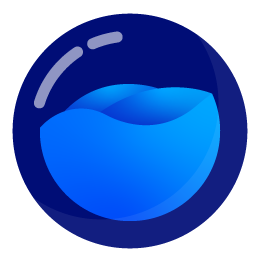A sovereign rollup based on the Madara engine and powered by Starknet. Proudly developed by Kasar Labs in collaboration with Taproot Wizards.
For detailed guidelines on setting up and utilizing Barknet, please refer to the official documentation provided in the repository.
- Madara Explorer by the great LambdaClass team 🫶: A block explorer for Madara.
- Madara Infra: A
collection of scripts and tools to deploy and manage Madara on different
environments (e.g. AWS, docker, ansible, etc.). It also contains the
Starknet Stack
demo
docker-composefile. - Madara Kit Application:
A simple application that demonstrates how to use Madara. Deployed on
https://app.madara.zone. - Madara Docsite: The
source code of the Madara documentation website. Deployed on
https://docs.madara.zone. - Madara Tsukuyomi: The source code of the Madara Desktop App. A friendly GUI to start a Madara node and interact with it.
- App Chain Template: A ready to use template that allows you to easily start an app chain.
Do NOT fork this repo and build your app chain on top unless completely necessary. By adding changes using forking, you will have to periodically rebase (and solve conflicts) to remain updated with the latest version of Madara.
One of the main features of Madara is to allow users to start their app chains that support Cairo contracts and Starknet like blocks. Hence, to make it easy for users to build a custom app chain, we have created an app-chain-template which imports Madara as a pallet. This removes all the boilerplate code and allows you to focus on code only relevant to your app chain. Moreover, updating Madara is as simple as updating the pallet version.
Barknet is licensed under the Apache 2.0 license.
Let's scale Bitcoin togethers! 🚀 Get started with our comprehensive documentation, which covers everything from project structure and architecture to benchmarking and running Madara:
- Architecture Overview
- Chain Genesis Information
- Project Structure
- Getting Started Guide
- Run benchmark yourself
Want to dive straight in? Check out our Getting Started Guide for instructions on how to build and run Madara on your local machine.
Benchmarking is an essential process in our project development lifecycle, as it helps us to track the performance evolution of Madara over time. It provides us with valuable insights into how well Madara handles transaction throughput, and whether any recent changes have impacted performance.
You can follow the evolution of Madara's performance by visiting our Benchmark Page.
However, it's important to understand that the absolute numbers presented on this page should not be taken as the reference or target numbers for a production environment. The benchmarks are run on a self-hosted GitHub runner, which may not represent the most powerful machine configurations in real-world production scenarios.
Therefore, these numbers primarily serve as a tool to track the relative performance changes over time. They allow us to quickly identify and address any performance regressions, and continuously optimize the system's performance.
In other words, while the absolute throughput numbers may not be reflective of a production environment, the relative changes and trends over time are what we focus on. This way, we can ensure that Madara is always improving, and that we maintain a high standard of performance as the project evolves.
One can use flamegraph-rs to generate flamegraphs and look for the performance bottlenecks of the system by running the following :
./target/release/madara setup
flamegraph --root --open -- ./target/release/madara run --devIn parallel to that, run some transactions against your node (you can use Gomu Gomu no Gatling benchmarker). Once you stop the node, the flamegraph will open in your browser.
Once your Madara node is up and running, you can connect to our Dev Frontend App to interact with your chain. Connect here!
We're always looking for passionate developers to join our community and contribute to Madara. Check out our contributing guide for more information on how to get started.
This project is licensed under the MIT license.
See LICENSE for more information.
Happy coding! 🎉
Thanks goes to these wonderful people (emoji key):
This project follows the all-contributors specification. Contributions of any kind welcome!
